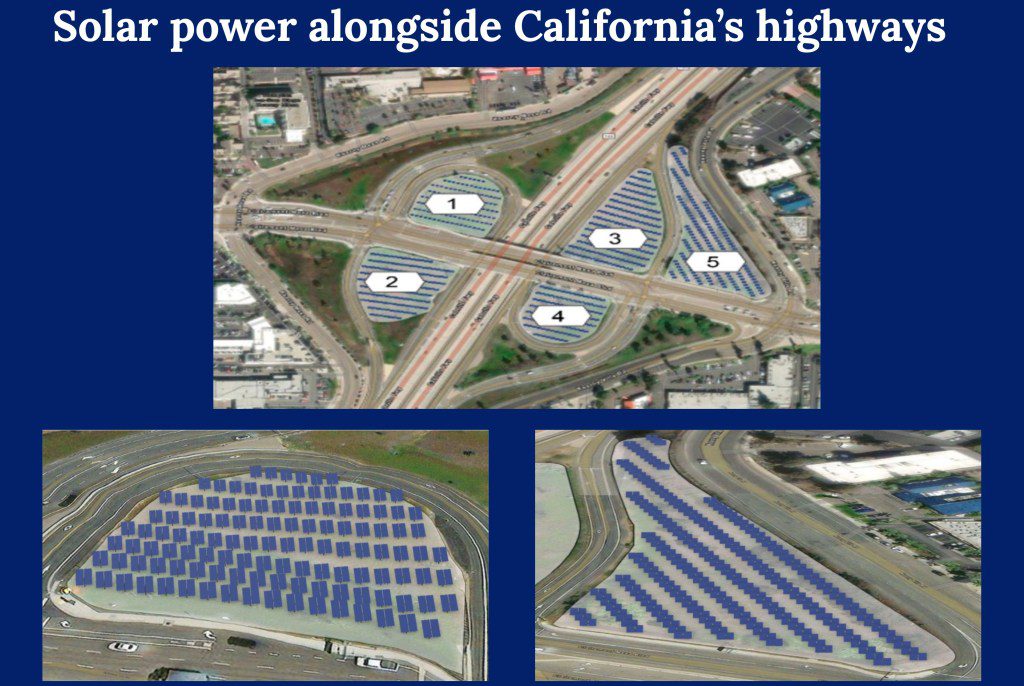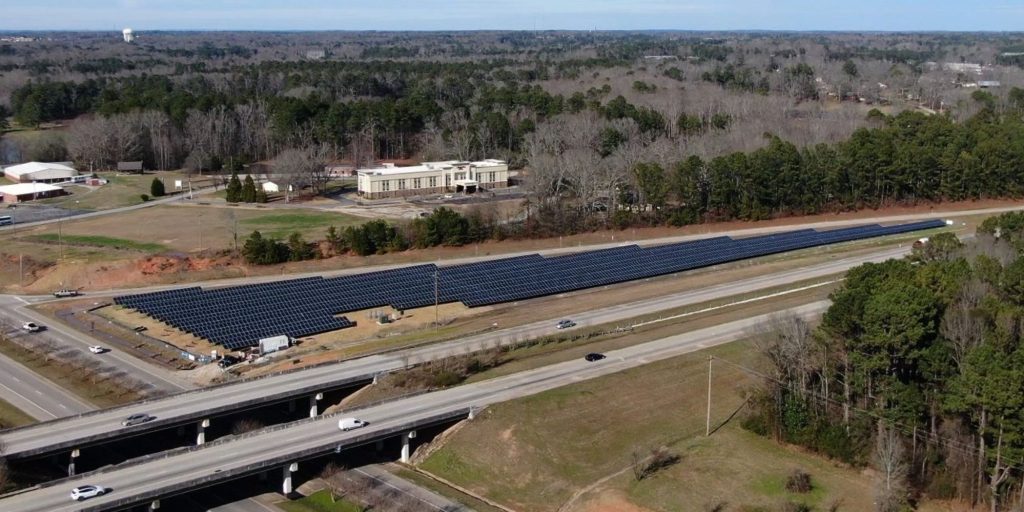California has the potential to generate enough electricity to meet the needs of 270.000 homes simply by installing solar panels on vacant lots alongside highways, in just three southern counties.
This is the conclusion of a new report published yesterday. These spaces, currently unused and unsuitable for wildlife due to heavy traffic, receive abundant sun exposure, particularly in the Southern California region. The report highlights not only the environmental benefits, but also the potential economic opportunities arising from the exploitation of these areas.
Highways of the sun
Unused spaces between highways, often regarded as “dead spaces,” represent an unexplored opportunity for solar energy generation. Every motorway intersection and every exit offer spaces that can be used for this purpose.
In the California report, detailed examination of potential installation areas led to an overall estimate of nearly a gigawatt of solar power coming from these empty spaces alone.
A significant advantage of these areas is their proximity to electricity transmission lines, and the fact that they are state-owned. This facilitates the development of large solar projects, eliminating the need to contract or lease land from multiple owners, build new transmission lines, or deal with other logistical complexities.

Is it an “exportable” model?
While the analysis focused on a state like California (which has many other areas with high solar potential), the approach is not exclusive to those parts.
In 2021, the Federal Highway Administration (the equivalent of our Highway Company) suggested that other states can adopt this strategy as well. The Biden administration considers this initiative a “game-changer” for achieving America's ecological goals. Can we do it ourselves too? Considering European, and in particular Italian, sun exposure, I would say yes: it's been ten years that research creates maps and models of a global alternative energy network.
Beyond the highways
Highways aren't the only place where solar panels can make a difference, of course. Another study showed that 5 million homes could be powered by installing solar panels on warehouse roofs. This would transform otherwise unused spaces into powerful energy generators, without the need to free up additional land for solar power plants. If car parks and department stores are also considered, the impact on reducing emissions would be significant.
In summary: why not? Highways, once a symbol of consumption and pollution, could become the arteries of a new world powered by the sun.


